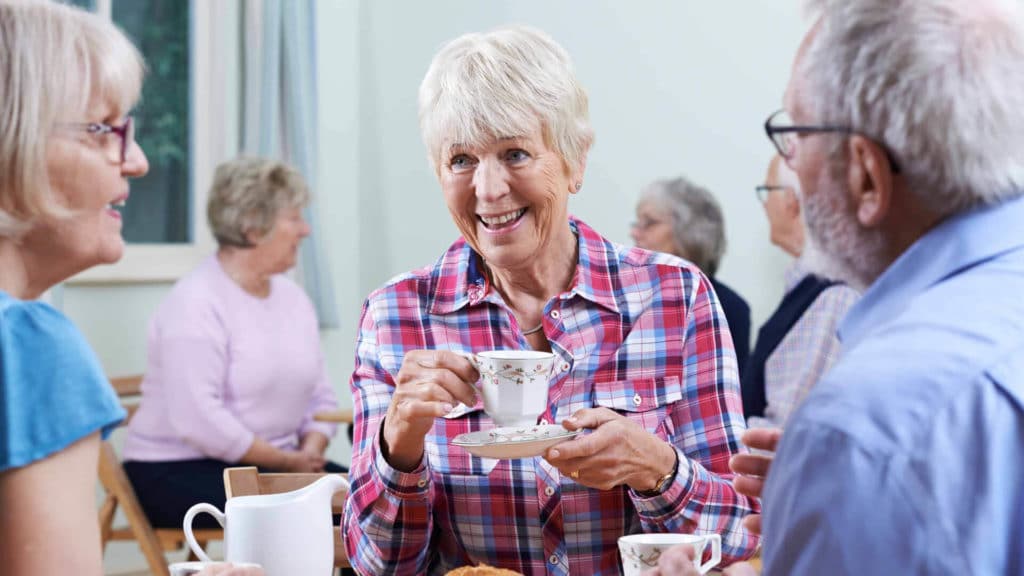Most Americans kickstart their day with a burst of energy from a good strong cup of coffee. And afternoon tea is a classic pick-me-up as energy fades later in the day. There are so many conflicting reports about the risks and benefits of caffeine that it can be confusing to understand the impact of caffeine on memory, digestion, and health.
So when it comes to the age-old debate between tea and coffee, which should you choose? Here’s what you need to consider:
Caffeine and Heart Health
The research on how caffeine affects heart health is mixed. Most recent studies show no increase in heart disease associated with caffeine consumption.
If you’re concerned about the effects of caffeine, caffeine-containing teas are usually lower in caffeine than coffee. Some teas, such as red raspberry leaf and chamomile, are naturally free of caffeine. If your doctor says you need to limit caffeine, or if you find you’re more sensitive to this stimulant as you age, these teas are a safer bet than coffee or caffeinated tea.
Cholesterol Considerations
Elevated LDL cholesterol can cause heart disease by clogging the arteries, potentially slowing blood flow and triggering a heart attack or stroke. Unfiltered coffee—boiled or espresso—can slightly elevate cholesterol levels, making it a bad bet if your cholesterol is already high. Green and black teas, however, may actually lower cholesterol. This makes them a safe bet for most older adults.
Coffee and Health
Researchers have studied coffee’s effects on health for decades. For most older adults, it’s safe. And depending upon your health risks, it may even offer some important health benefits. Research has shown that:
- Coffee lowers the risk of dementia. It may also reduce the risk of mild cognitive impairment, a reduction in brain functioning that often precedes dementia. Coffee may also improve memory and overall cognitive performance.
- Coffee, like fruits such as blueberries, is rich in antioxidants that can fight free radicals. Free radicals are linked to aging skin, cancer, and a host of other maladies.
- Despite the mild risk factors associated with caffeine consumption, coffee may actually lower the risk of cardiovascular disease. A study of 130,000 people found that drinking one to three cups of coffee per day was linked to a 20 percent reduction in hospitalization for heart arrhythmias. A study of more than 83,000 women found that consumption of two or more cups of coffee per day had a 20 percent reduction in their risk of stroke.
- Coffee may lower the risk of type 2 diabetes. This type of diabetes is more prevalent among older adults.
- Coffee is not, contrary to earlier research, linked to an elevated risk of cancer. In fact, it may slow the growth of tumors and reduce the risk of cancers of the breast, prostate, liver, esophagus, and colon.
Coffee also poses some risks. Those include:
- A small decrease in bone density if consuming large amounts of coffee. However, the decrease was not linked to an increased risk of bone fractures.
- Anxiety in people who are sensitive to caffeine.
- A temporary increase in blood pressure. People who have high blood pressure may need to abstain from both coffee and caffeine-containing teas.
- Dehydration. Caffeine is a diuretic, and its effects tend to be more pronounced in people whose bodies are unaccustomed to caffeine. Moderate regular use is less likely to cause dehydration. If you have a history of kidney problems or incontinence, talk to your doctor about whether or not it’s safe to consume coffee.
Tea and Health
Researchers are increasingly interested in tea’s health effects. Tea is rich in catechins and epicatechins, a group of flavonoids that can fight inflammation. Inflammation is linked to a wide range of health problems, including arthritis, chronic illnesses, and heart disease. Green teas have higher flavonoid levels than black teas, potentially offering greater health benefits.
Some other benefits of tea are:
- Lower blood pressure.
- A reduction in LDL cholesterol and triglycerides.
- Improved vascular reactivity. This is a measure of how effectively the blood vessels respond to physical and emotional stress. Vascular reactivity tends to decline with age.
- Antioxidant benefits. Teas contain antioxidants that are different from those in fruit and coffee, potentially strengthening the body’s ability to fight the damaging effects of free radicals.
- A reduced risk of dementia. One study found that a cup of tea each day can reduce the risk of dementia, including in people who carry a genetic risk factor for Alzheimer’s. The research supporting tea’s dementia-fighting benefits isn’t as extensive as research on coffee. But so far, it seems that tea may offer similar benefits to coffee.
Teas that contain caffeine pose similar risks to coffee, including dehydration, anxiety, and blood pressure spikes. There are also some risks associated with drinking herbal teas. These teas, which are often poorly regulated, may contain high levels of toxins and carcinogens. Choose tea from a source you trust and ensure you know the ingredients. If you’re not sure if you can safely consume herbal teas, talk to your doctor about your specific dietary or health limitations.
Other Factors
It’s not just the coffee or tea, but also what you put in it. Sugar, creamer, and other flavor additives can drive up the calorie content of your drinks. Sugar consumption is linked to gum disease and tooth decay, as well as diabetes. Some people experience gastrointestinal issues when they consume dairy products such as creamer. So be conservative with your use of flavor additives or make adjustments elsewhere in your diet to account for their use.
Coffee or Tea: Which Should I Choose?
There’s no clear winner in the perennial debate between coffee lovers and tea addicts. Both drinks offer clear health benefits, but each comes with a few risks. For most older adults, it comes down to a matter of personal taste.
If you’re new to coffee or tea, try experimenting. Start slowly, with a half-cup or so, and see how you feel. And as with all health decisions, talk to your doctor first. Moderation is key, offering the benefits of coffee and tea while minimizing the risks.




